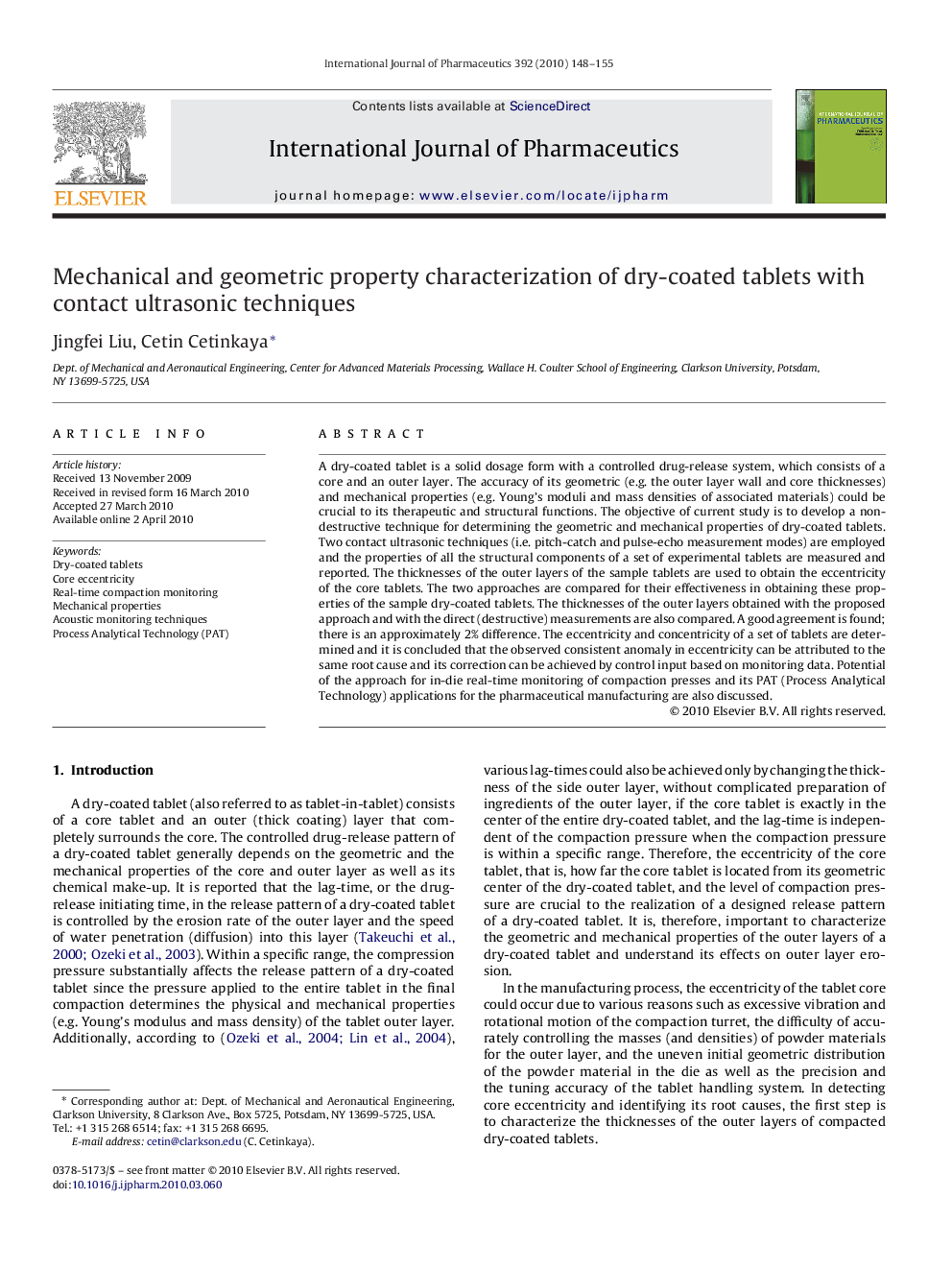| Article ID | Journal | Published Year | Pages | File Type |
|---|---|---|---|---|
| 2504059 | International Journal of Pharmaceutics | 2010 | 8 Pages |
A dry-coated tablet is a solid dosage form with a controlled drug-release system, which consists of a core and an outer layer. The accuracy of its geometric (e.g. the outer layer wall and core thicknesses) and mechanical properties (e.g. Young's moduli and mass densities of associated materials) could be crucial to its therapeutic and structural functions. The objective of current study is to develop a non-destructive technique for determining the geometric and mechanical properties of dry-coated tablets. Two contact ultrasonic techniques (i.e. pitch-catch and pulse-echo measurement modes) are employed and the properties of all the structural components of a set of experimental tablets are measured and reported. The thicknesses of the outer layers of the sample tablets are used to obtain the eccentricity of the core tablets. The two approaches are compared for their effectiveness in obtaining these properties of the sample dry-coated tablets. The thicknesses of the outer layers obtained with the proposed approach and with the direct (destructive) measurements are also compared. A good agreement is found; there is an approximately 2% difference. The eccentricity and concentricity of a set of tablets are determined and it is concluded that the observed consistent anomaly in eccentricity can be attributed to the same root cause and its correction can be achieved by control input based on monitoring data. Potential of the approach for in-die real-time monitoring of compaction presses and its PAT (Process Analytical Technology) applications for the pharmaceutical manufacturing are also discussed.
